Great Tit
Parus major (Linnaeus, 1758)
GT
 GRETI
GRETI  14640
14640

Family: Passeriformes > Paridae
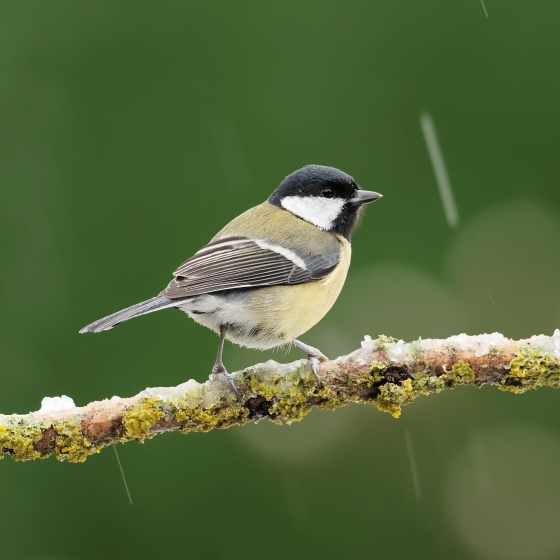
The Great Tit is a common visitor to garden bird feeders. Outside urban areas, it is primarily a species of scrub and deciduous woodland.
The Great Tit is a striking little bird, with a bluish-green back and a yellow breast divided by a central black stripe. The sexes are similar, but in males the black stripe is more pronounced. It is a vocal species with a huge range of songs and calls; its most familiar is its repeated ‘teacher-teacher-teacher’ song which can be heard throughout woodlands in spring.
UK Great Tit numbers increased from the 1960s, although they have stablised since about 2010. Great Tits take readily to nest boxes, and lay one (sometimes two) clutches a year. They are primarily insectivorous in summer, but over winter they frequent bird feeders and are often found in mixed flocks with other tit species. They are widespread throughout Britain & Ireland apart from on some islands in northern and western Scotland.
Exploring the trends for Great Tit
Our Trends Explorer will also give you the latest insight into how the UK's Great Tit population is changing.
trends explorerIdentification
Great Tit identification is often straightforward.
SONGS AND CALLS
Listen to example recordings of the main vocalisations of Great Tit, provided by xeno-canto contributors.
Begging call
Call
Song
Develop your bird ID skills with our training courses
Our interactive online courses are a great way to develop your bird identification skills, whether you're new to the hobby or a competent birder looking to hone your abilities.
Browse training coursesStatus and Trends
Population size and trends and patterns of distribution based on BTO surveys and atlases with data collected by BTO volunteers.
CONSERVATION STATUS
This species can be found on the following statutory and conservation listings and schedules.
POPULATION CHANGE
Great Tit numbers have increased fairly steadily since the 1960s, with the exception of two or three brief periods of stability or shallow decline. The BBS map of change in relative density between 1994-96 and 2007-09 indicates that increase during that period occurred throughout the UK range. A new strain of avian pox, first recorded in 2006, is increasing in Great Tits but without evidence so far of demographic effects (Lawson et al. 2012a, 2018). Laying dates have advanced by nine days since 1968. Earlier nesting can be linked to the phenology of spring greening in woodland, though with much small-scale spatial variation (Cole et al. 2015). There has been an increase across Europe since 1980 (PECBMS: PECBMS 2020a>).
| UK breeding population |
+93% increase (1967–2020) 
|
Exploring the trends for Great Tit
Our Trends Explorer will also give you the latest insight into how the UK's Great Tit population is changing.
trends explorerDISTRIBUTION
Great Tits occur in 90% of 10-km squares in Britain & Ireland in both winter and the breeding season. As with the Blue Tit, the only significant range gaps are in treeless moorland areas of the Scottish Highlands, the Outer Hebrides and Northern Isles. Densities are highest in lowland wooded landscapes of England, Wales and parts of eastern Ireland.
Occupied 10-km squares in UK
| No. occupied in breeding season | 2721 |
| % occupied in breeding season | 90 |
| No. occupied in winter | 2723 |
| % occupied in winter | 90 |
European Distribution Map
European Breeding Bird Atlas 2
Breeding Season Habitats
| Most frequent in |
Deciduous Wood 
|
| Also common in | Villages |
Relative frequency by habitat
Relative occurrence in different habitat types during the breeding season.

DISTRIBUTION CHANGE
Change in range size has been small over the last 40 years, but in many parts of the range, and especially in Ireland, there have been large increases in abundance.
Change in occupied 10-km squares in the UK
| % change in range in breeding season (1968–72 to 2008–11) | +3.7% |
| % change in range in winter (1981–84 to 2007–11) | +5.4% |
SEASONALITY
Great Tit is recorded throughout the year on up to 60% of complete lists.

Movement
Information about movement and migration based on online bird portals (e.g. BirdTrack), Ringing schemes and tracking studies.
RINGING RECOVERIES
View a summary of recoveries in the Online Ringing Report.
Foreign locations of birds ringed or recovered in Britain & Ireland

Biology
Lifecycle and body size information about Great Tit, including statistics on nesting, eggs and lifespan based on BTO ringing and nest recording data.
PRODUCTIVITY & NESTING
Exploring the trends for Great Tit
Our Trends Explorer will also give you the latest insight into how the UK's Great Tit population is changing.
trends explorerSURVIVAL & LONGEVITY
View number ringed each year in the Online Ringing Report
Exploring the trends for Great Tit
Our Trends Explorer will also give you the latest insight into how the UK's Great Tit population is changing.
trends explorerBIOMETRICS
Wing Length 
|
Adults | 75±3.8 | Range 71–79mm, N=53986 |
| Juveniles | 74.5±2.1 | Range 71-78mm, N=34300 | |
| Males | 76.5±4.7 | Range 73–79mm, N=27388 | |
| Females | 73.5±1.8 | Range 71–76mm, N=26096 |
Body Weight 
|
Adults | 18.6±2.78 | Range 16.6–20.8g, N=42606 |
| Juveniles | 18.6±3.053 | Range 16.6–20.6g, N=27373 | |
| Males | 19.1±3.28 | Range 17.3–21.0g, N=21527 | |
| Females | 18.1±2.05 | Range 16.3–20.2g, N=20699 |
Feather measurements and photos on featherbase 
CODES & CLASSIFICATION
Ring size 
|
A or B (pulli B) |
Field Codes 
|
2-letter: GT | 5-letter code: GRETI | Euring: 14640 |
For information in another language (where available) click on a linked name
Research
Interpretation and scientific publications about Great Tit from BTO scientists.
CAUSES AND SOLUTIONS
Causes of change
Demographic trends in breeding parameters do not suggest that increases in this species are due to improvements in breeding performance. There is some evidence, albeit limited, that improvements in survival rates, due to amelioration in wintering conditions, may have been responsible. Evidence for ecological drivers of the population increase is limited but increased provisioning in gardens and milder winters may have played a role.
Further information on causes of change
The number of fledglings per breeding attempt have decreased alongside decreases in clutch and brood sizes (see above). Daily failure rates at the egg stage have also decreased but daily failure rates at the chick stage has not changed. Consequently, breeding success does not contribute substantially to population change, and integrated modelling confirms that variation in adult survival is the primary driver of annual population change (Robinson et al. 2014).
Increases in survival rates, due to more widespread food provision in gardens during winter is one possible explanation for the increase (Plummer et al. 2019). Horak & Lebreton (1998) found that survival rates in Estonia were higher in urban populations than rural ones and suggested that this was partly due to supplementary feeding in gardens. Increasing winter temperature may have also played a role. Ahola et al. (2009) suggested that, for their study population in Sweden, increasingly favourable conditions in winters have enhanced the survival rates of Great Tit and resulted in the observed increase in Great Tit breeding density.
Other factors are also likely to influence survival rates. There is some evidence that the beech crop may be influential and it has been shown that survival rates can be related to beechmast production (Verhulst 1992, Perdeck et al. 2000), although there is no evidence that beechmast production has gone up. Perdeck et al. (2000) provided further evidence for this as supplemental food increased survival of both juveniles and adults, supporting the winter-food limitation hypothesis. In a Finnish population, Orell (1989) reported that the high survival rates of resident juveniles after a warm August may be attributable to food availability during the time when the birds undergo their post-juvenile moult.
Great Tits have advanced their laying date, in line with climatic change. This has been found by several studies (e.g. Sanz 2002, Visser et al. 2009, Bauer et al. 2010), but does not seem to be influencing the population trend. Intraspecific competition may also drive population changes in Great tits (Gamelon et al. 2019), and there is evidence that density-dependent effects influence clutch size, hatching success and fledging success, which may explain the decreases observed in clutch size as fledging rates as the population has increased (Bodey et al. 2020). Severe weather events are expected to become more frequent as a result of climate change and conditions such as heavy and persistent rainfall can also be an important driver of Great Tit breeding success (Scholl et al. 2020); however, there is no evidence that this has driven population change.
Information about conservation actions
Like its close relative the Blue Tit, the population of this species has increased since the 1970s, hence it is not a species of concern and no conservation actions are currently required. However, it has experienced a shallow decline over the last ten years and therefore ongoing monitoring would be prudent.
Ongoing provision of garden bird food is likely to continue to benefit the Great Tit. However, the effects are not always entirely positive and feeders may contribute to the spread of avian pox, so those providing food should ensure they follow good hygiene practices. The provision of nest boxes, both in gardens and elsewhere, is also likely to continue to benefit this species.
PUBLICATIONS (7)
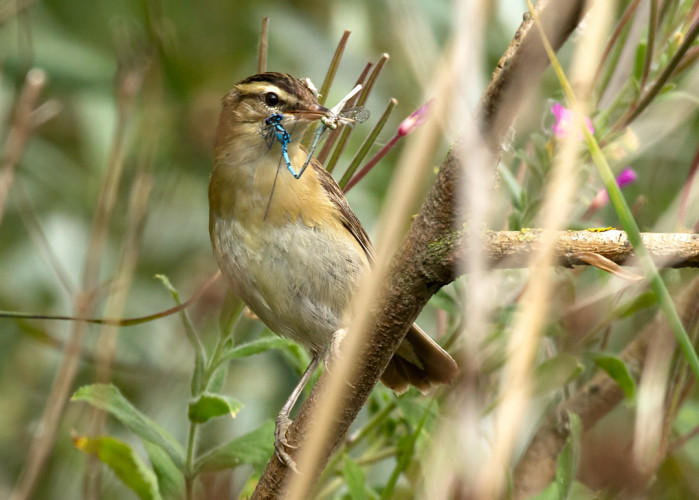
Declines in invertebrates and birds – could they be linked by climate change?
Are the declines of birds and invertebrates linked by climate change?
Many of the detected effects of climate change on biodiversity have occurred through impacts on food chains.
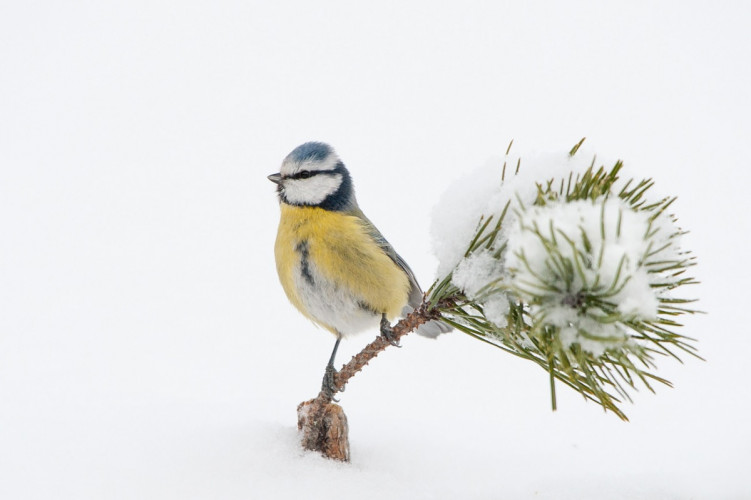
Evidence that rural wintering populations supplement suburban breeding populations
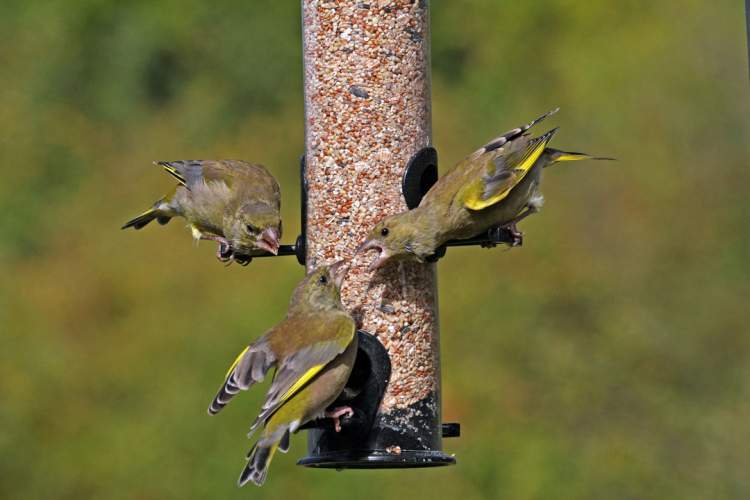
Health hazards to wild birds and risk factors associated with anthropogenic food provisioning
The health hazards to wild birds associated with garden feeding.
The provision of supplementary food for wild birds at garden feeding stations is a widespread practice in the UK. These additional resources have been shown, through research, to be of benefit to wild birds, but there is still a great deal that we do not know about the wider implications of such provisioning. Wherever individual birds congregate, the risk of disease transmission is increased, and the high densities of birds often seen at garden feeding stations might contribute to the emergence and spread of infectious diseases.
Passerines may be sufficiently plastic to track temperature-mediated shifts in optimum lay date
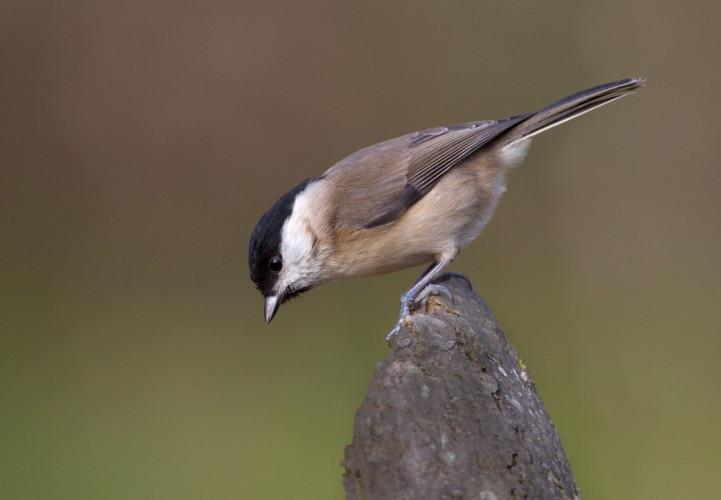
Temporal avoidance as a means of reducing competition between sympatric species
Do Marsh Tits modify their behaviour to reduce competition?
Competition between species has been put forward as a possible reason for the declines seen in some bird species, including Marsh Tit and Willow Tit, but confirming a causal link between competitio
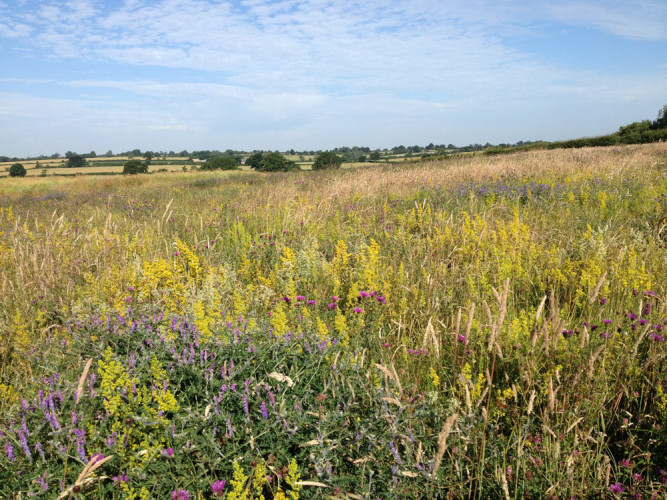
The effects of a decade of agri-environment intervention in a lowland farm landscape on population trends of birds and butterflies
Can agri-environment schemes achieve positive outcomes for nature?
Links to more information from ConservationEvidence.com
Would you like to search for another species?













Share this page